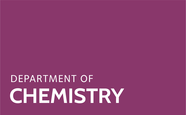TolR is a 15-kDa inner membrane protein subunit of the Tol-Pal complex in Gram-negative bacteria, and its function is poorly understood. Tol-Pal is recruited to cell division sites where it is involved in maintaining the integrity of the outer membrane. TolR is related to MotB, the peptidoglycan (PG)-binding stator protein from the flagellum, suggesting it might serve a similar role in Tol-Pal. The only structure thus far reported for TolR is of the periplasmic domain from Haemophilus influenzae in which N- and C-terminal residues had been deleted (TolR(62-133), Escherichia coli numbering). H. influenzae TolR(62-133) is a symmetrical dimer with a large deep cleft at the dimer interface. Here, we present the 1.7-Å crystal structure of the intact periplasmic domain of E. coli TolR (TolR(36-142)). E. coli TolR(36-142) is also dimeric, but the architecture of the dimer is radically different from that of TolR(62-133) due to the intertwining of its N and C termini. TolR monomers are rotated ∼180° relative to each other as a result of this strand swapping, obliterating the putative PG-binding groove seen in TolR(62-133). We found that removal of the strand-swapped regions (TolR(60-133)) exposes cryptic PG binding activity that is absent in the full-length domain. We conclude that to function as a stator in the Tol-Pal complex dimeric TolR must undergo large scale structural remodeling reminiscent of that proposed for MotB, where the N- and C-terminal sequences unfold in order for the protein to both reach and bind the PG layer ∼90 Å away from the inner membrane.
Flagella
,Periplasm
,Escherichia coli
,Peptidoglycan
,Lipoproteins
,Bacterial Proteins
,Bacterial Outer Membrane Proteins
,Escherichia coli Proteins
,Membrane Proteins
,Recombinant Proteins
,Crystallography, X-Ray
,Sequence Alignment
,Gene Expression
,Binding Sites
,Amino Acid Sequence
,Protein Structure, Secondary
,Protein Structure, Tertiary
,Protein Binding
,Models, Molecular
,Molecular Sequence Data
,Protein Multimerization
,Hydrophobic and Hydrophilic Interactions




